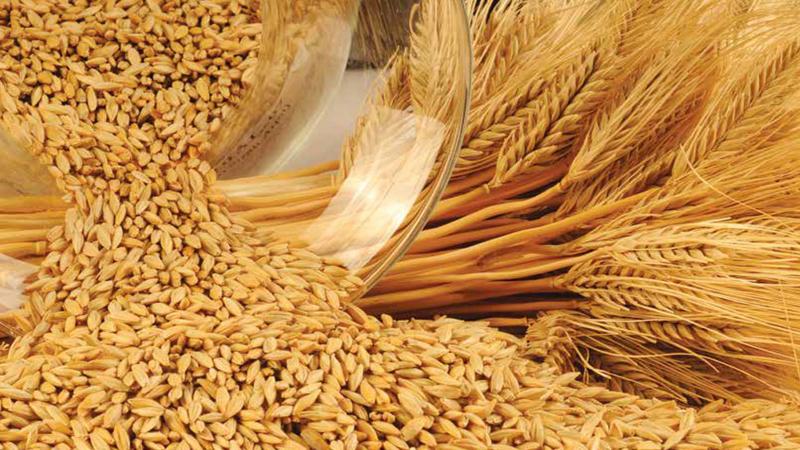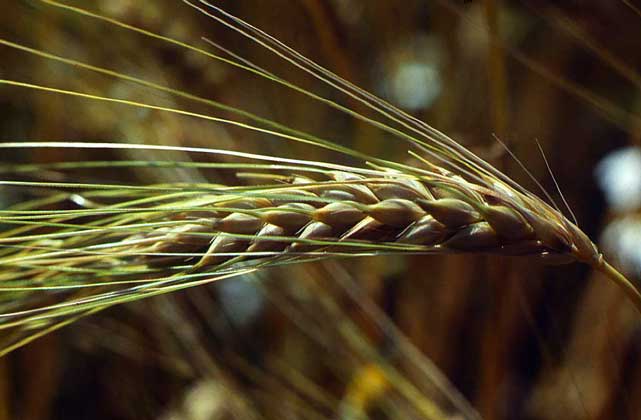Characteristics of barley varieties: Dostoyny, Duncan, Harlem and others
Barley is one of the most cultivated grain crops, ranking fourth in terms of sown area. The popularity of this plant is explained by its valuable properties and short growing season, which allows for high grain yields in regions with cold climates. Barley is not picky about weather conditions and soil composition.
Nutritional value, chemical composition and calorie content of barley

100 g of food grain contains about 290 kcal. Proteins account for 10.3 g, fats – 2.4 g, carbohydrates – 56.4 g.
This serving of barley also contains:
- water – 2.4 g;
- ash – 14 g;
- fiber – 14.6 g.
The high calorie content of the product is explained by the large amount of carbohydrates in it.
Reference. Including barley in the diet does not contribute to weight gain, but with a balanced diet, on the contrary, it helps to lose weight.
100 g of barley grain contains numerous macro- and microelements, vitamins and other components valuable for the body. Among them:
- potassium – 452.5 mg;
- phosphorus – 354 mg;
- magnesium – 150 mg;
- calcium – 93 mg;
- sodium – 32 mg;
- sulfur – 89 mg;
- chlorine – 125 mg;
- boron – 290 mg;
- iron – 7.4 mg;
- selenium – 22 mcg;
- zinc – 2.7 mg.
Composition of vitamins:
- vitamin B1 – 0.33 mg;
- vitamin B2 – 0.13 mg;
- vitamin B6 – 0.47 mg;
- pantothenic acid (B5) – 0.7 mg;
- folic acid (B9) – 41 mcg;
- nicotinic acid (B3 or PP) – 6.5 mg;
- tocopherol (E) – 1.7 mg.
In 100 g of product, the proportion of unsaturated fats is 2%, monosaturated – 1%, polyunsaturated – 5%, including omega-3 and omega-6. The grain crop is rich in essential and non-essential amino acids.
What types of barley exist and how do they differ?
Grain crops can be divided into several groups.
By appearance

Different varieties of this cereal are cultivated:
- annuals;
- biennial;
- perennial.
According to growing technology
There are winter and spring barley, each of which has its own requirements for growth. In the Russian Federation they prefer the winter method growing, since it gives higher harvests.
By application
Grain is divided into two classes depending on its quality characteristics. The first class is intended for use in the food industry. Pearl barley and barley are made from it cereal, as well as flour.
Second class barley is used to make animal feed. It is also obtained from malt, necessary for the production of alcohol.
Characteristics of winter varieties with descriptions
Most often, barley is sown before winter. The winter barley model is characterized not only by higher yields, but also by early ripening. After harvesting the grain, it becomes possible to use the area to grow other plants.
According to reviews from farmers and owners of household plots, those varieties of barley are in demand that not only have high productivity and early ripening, but also easily tolerate frost, drought and temperature changes.
Worthy

Grain-forage mid-season variety - ripens in 230-249 days. Adapts well to sudden drops in temperature and lack of moisture in the soil. The average yield per 1 ha is 48.9 centners, the maximum is 80 centners.The grain is large in size, yellow in color, elongated in shape. Weight of 1000 grains – 38-46 g. Protein content – 8.9-13.3%.
The characteristics of Decent barley should be supplemented by the fact that the plant is resistant to lodging and moderately susceptible to septoria, powdery mildew and loose smut. Growing rules require treating seeds before sowing. The variety is demanding when it comes to fertilization.
Duncan
It tolerates drought and temperature changes from +50°C to -35°C. Gives a high yield - up to 160-170 centners per 1 ha. The recommended seed sowing rate is 160 kg per 1 ha. The grain crop has a powerful stem, which makes it resistant to lodging.
Duncan barley is not susceptible to fungal and viral diseases:
- root rot;
- bacteriosis;
- septoria;
- powdery mildew;
- snow mold;
- dwarf rust;
- reticulate and bordered spotting, etc.
Tolerates soil salinity well.
Haarlem
Transgenic barley of the latest generation, bred in Canada. Characterized by high drought and frost resistance. The ear reaches a length of 22 cm. The grain is large, golden in color. It is grown both for food purposes and for livestock feed.
The maximum yield is 110 c/ha. The recommended seed sowing rate is 130 kg/ha. Sowing is carried out from early August to early November. The growing season is about 270 days.
Among the benefits of Haarlem barley:
- does not lose seed quality for 10 years;
- easily tolerates severe drought;
- has high immunity to fungal and viral diseases;
- develops normally in soil salinity;
- tolerates acid rain well.
The variety is highly resistant to lodging and fallow.
Vivat
A two-handled variety recommended for cultivation in the North Caucasus region.The average yield is 58.5 c/ha. The maximum yield can reach 96.1 c/ha.
Refers to mid-season varieties with a growing season of 224-260 days. Tolerates low temperatures well and is resistant to lodging. Weight of 1000 grains is 37-46 g. The protein content in grain is 9-14%. It is affected moderately by brown rust and powdery mildew, by helminthosporium - severely, and by loose smut - very strongly.
Recommended for growing for livestock feed.
Alta
Winter hybrid of barley, characterized by good frost and drought resistance. Gives a good harvest, reaching 60 c/ha.
Intended for use both in the food industry and for the production of animal feed.
Monolith

The hybrid was bred by breeders of Karabalykskaya Agricultural Production Association LLP. Productivity is high, under favorable conditions reaching 70 c/ha. The variety is resistant to drought, frost, lodging and shedding.
Barley is characterized by high ecological plasticity. Demanding about the application of fertilizers to the soil. The optimal planting period is from the beginning of September to the end of October (depending on the climate zone).
Basalt
German elite variety, characterized by high resistance to drought. Lack of moisture in the soil does not affect the quality and quantity of grain. If agricultural techniques are followed, it is possible to obtain a yield of about 55 c/ha. Belongs to bushy varieties.
Tom
The new two-handled variety has proven itself well in the acutely arid climatic conditions of the Crimean Peninsula. It is characterized by high productivity - up to 110 c/ha.
The variety is early ripening, resistant to lodging and diseases. Responds well to the application of fertilizers to the soil.
Other
Other popular varieties include:
- The ark;
- Sejm;
- Cinderella;
- Fantastic;
- Selena Star;
- Dobrynya;
- Casket;
- Prikumsky.
The most winter-hardy varieties
The main disadvantage of winter barley is the likelihood of frost damage. Therefore, the work of breeders is aimed at developing increasingly winter-hardy varieties.
Well proven:
- Morozko;
- Zimur;
- Pharaoh;
- Samson;
- Frontier.
Application of barley

Barley grain is widely in demand among consumers. Barley and pearl barley cereals and flour are produced from it.
Barley is used to make beer, kvass, whiskey and coffee drinks.
Attention! The cereal crop is famous for its dietary properties, so porridges and soups made from barley grain healthy be included in the daily menu if you are overweight.
The medicinal properties of barley make it possible to include it in a variety of folk recipes. Barley decoctions help:
- restore sleep patterns;
- improve metabolic processes;
- reduce temperature;
- improve intestinal motility;
- remove excess fluid from the body.
Barley extract is added to cosmetics:
- shampoos;
- creams;
- masks;
- lotions;
- tonics.
Conclusion
Barley grain is a popular food, feed and technical product. It contains numerous vitamins and minerals necessary for humans.
The beneficial properties of this cereal were appreciated by our ancestors. Drinks and dishes were prepared from it to increase physical endurance and performance. In the modern world, barley continues to be grown on a large scale and used in various spheres of life.